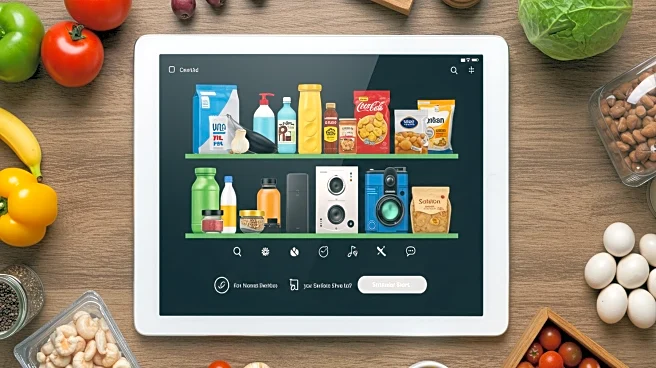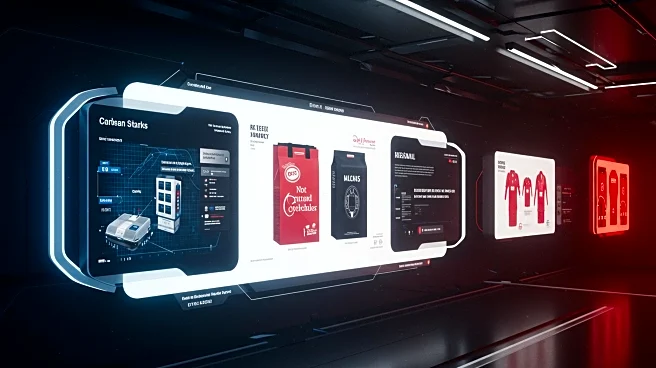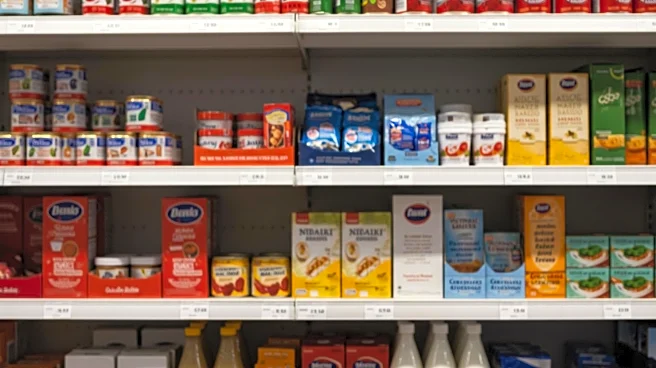What's Happening?
Digital grocery sales are projected to become the largest ecommerce category in the U.S. by 2026, surpassing apparel and accessories. This growth presents significant marketing opportunities for non-food brands, such as pet food and personal care products, which can leverage grocery ecommerce strategies to reach loyal and consistent grocery consumers. Grocery chains are increasingly offering digital advertising opportunities, including in-store audio and in-app ads, to target consumers effectively. Companies like Albertsons are partnering with platforms like Rokt to provide shoppers with deals on services such as Hulu and Uber, showcasing the potential for non-endemic advertising within grocery ecommerce.
Why It's Important?
The expansion of digital grocery platforms offers non-food brands a unique opportunity to tap into the consistent shopping habits of grocery consumers. By integrating omnichannel marketing strategies, brands can increase their share of voice and conversion rates, leading to sustained business growth. This shift in consumer behavior, with a preference for curbside pickup and direct retailer orders, highlights the importance of adapting marketing strategies to meet evolving shopping preferences. Brands that successfully navigate this landscape can benefit from increased visibility and engagement, ultimately driving sales and customer loyalty.
What's Next?
As digital grocery sales continue to grow, brands are expected to further integrate their marketing strategies with grocery ecommerce platforms. This includes leveraging pre-shopping activities, such as list creation and browsing retailer websites, to influence purchase decisions. Retail media networks like Walmart Connect are expanding their offerings, providing brands with more opportunities to reach consumers through various channels, including social media and display ads. Brands will need to continue adapting to these changes to remain competitive and capitalize on the growing digital grocery market.











